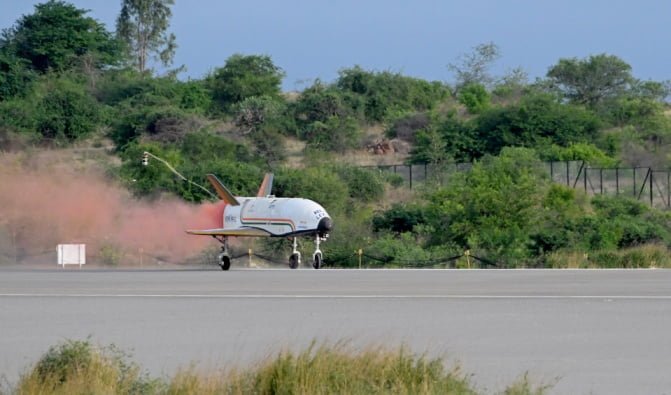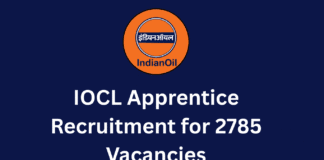The Indian Space Research Organisation (ISRO) has proudly achieved its third consecutive success in the Reusable Launch Vehicle (RLV) Landing EXperiment (LEX) on June 23, 2024. This significant milestone, RLV LEX-03, was conducted at 07:10 IST at the Aeronautical Test Range (ATR) in Chitradurga, Karnataka.

ISRO Successful RLV LEX-03 Mission
Following the successes of RLV LEX-01 and LEX-02, RLV LEX-03 demonstrated the autonomous landing capability of the RLV under more challenging conditions. The winged vehicle, named ‘Pushpak’, released from an Indian Air Force Chinook Helicopter at an altitude of 4.5 km. It autonomously performed cross-range correction maneuvers from 4.5 km away, approaching the runway and achieving a precise horizontal landing at the centerline. The landing velocity exceeded 320 kmph, significantly higher than the 260 kmph for commercial aircraft and 280 kmph for fighter aircraft. The brake parachute reduced the vehicle’s velocity to nearly 100 kmph, followed by landing gear brakes for a complete stop.

ISRO RLV landing Experiment Mission: Advanced Guidance Algorithm and Multisensor Fusion
This mission validated an advanced guidance algorithm for error corrections essential for future Orbital Re-entry Missions. The RLV-LEX utilizes multisensor fusion, including sensors like Inertial Sensor, Radar Altimeter, Flush Air Data System, Pseudolite System, and NavIC. Notably, the RLV-LEX-03 mission reused the winged body and flight systems from the LEX-02 mission without modifications, demonstrating ISRO’s robust design and reuse capability.

Collaborative Effort and Future Prospects
The mission, led by VSSC, involved collaboration with multiple ISRO centers: SAC, ISTRAC, SDSC-SHAR, and IISU. Support also came from the Indian Air Force, Aeronautical Development Establishment, Aerial Delivery Research and Development Establishment, Regional Centre for Military Airworthiness, National Aerospace Laboratories, IIT Kanpur, Indian aerospace industrial partners, Indian Oil Corporation, and Airport Authority of India.
Shri. S Somanath, Chairman of ISRO and Secretary of the Department of Space, congratulated the team for maintaining a streak of successes in complex missions. Dr. S Unnikrishnan Nair, Director of VSSC, emphasized the boost in confidence for critical technologies essential for future orbital re-entry missions. The mission was directed by Shri. J Muthupandian, with Shri. B Karthik as the Vehicle Director.
Conclusion
The third success of ISRO’s RLV Landing Experiment marks a significant advancement in reusable space technology, positioning India as a leader in space innovation. This accomplishment reaffirms ISRO’s expertise and capability in developing critical technologies for reusable launch vehicles.



